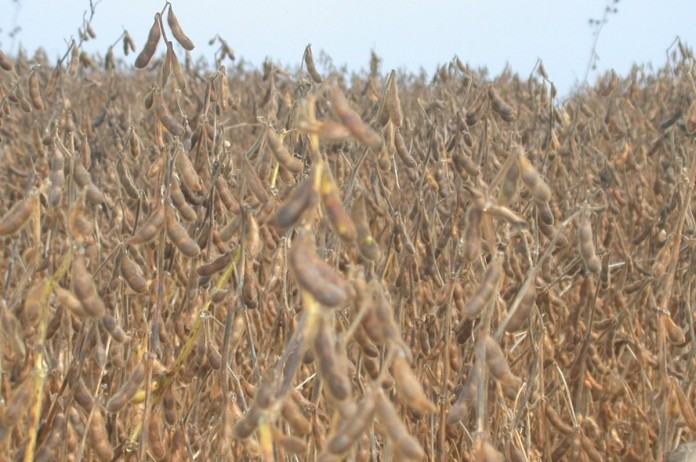COLUMBUS — Ranked sixth in the nation for overall soybean production, Ohio is a key player in meeting the needs of U.S. soy’s international and domestic customers. And with its proximity to shipping and major poultry-producing regions on the East Coast, Ohio soybean farmers are in position to take advantage of their location.
Soybean farmers
In order to satisfy customer demands, maintaining the state’s transportation infrastructure is crucial. With nearly half of Ohio’s soy shipped by either rail or barge, according to a soy-checkoff-funded study, soybean farmers need these modes of transportation to remain competitive.
“We’ve got freighters shipping out of Lake Erie, barges going out of Cincinnati and rail yards transporting soybeans to various domestic poultry locations like South Carolina and the Delmarva region,” says John Motter, a Jenera, Ohio, farmer, United Soybean Board (USB) director and Ohio Soybean Council chairman. “We consistently ship our crop to international customers, and poultry farmers continue to be the single biggest user of our soybeans, so we’re talking about major customers that we need to keep happy.”
But there are challenges
Ohio River barge shipments have suffered, with a drastic increase in unplanned lock closures, a major expense for shippers.
For example, a checkoff analysis shows that if the Markland Lock on the Ohio River were to shut down for two weeks, it would cost shippers $1 million, cutting potential profits for soybean farmers. Routine maintenance of the country’s lock-and-dam system could prevent these closures.
While there are challenges, there are also opportunities, Motter says.
“Whatever form of transportation soybeans take, we certainly have a leg up being a major soybean-producing state so close to the East Coast,” he says. “Despite lock-and-dam issues, the development of double-stack trains traveling to ports along the Atlantic Ocean, for example, opens up new opportunities for Ohio soybean farmers.”
And because of a new CSX intermodal facility in North Baltimore, Ohio, soybeans traveling to the Pacific Northwest, for customers in Asia, can now bypass Chicago, without changing loads, which makes shipping more efficient.
Rail vs. barge
Ohio farmers grew 206 million bushels of soybeans in 2012, according to the U.S. Department of Agriculture. A soy-checkoff-funded study found that, of the Ohio beans that shipped in 2010, more than 76 million bushels traveled by rail and more than 26 million bushels by barge. Top export destinations were China, Europe and Indonesia, and its top domestic destination was the Southeast.
The 69 farmer-directors of USB oversee the investments of the soy checkoff to maximize profit opportunities for all U.S. soybean farmers. These volunteers invest and leverage checkoff funds to increase the value of U.S. soy meal and oil, to ensure U.S. soybean farmers and their customers have the freedom and infrastructure to operate, and to meet the needs of
U.S. soy’s customers
As stipulated in the federal Soybean Promotion, Research and Consumer Information Act, the USDA Agricultural Marketing Service has oversight responsibilities for USB and the soy checkoff.











